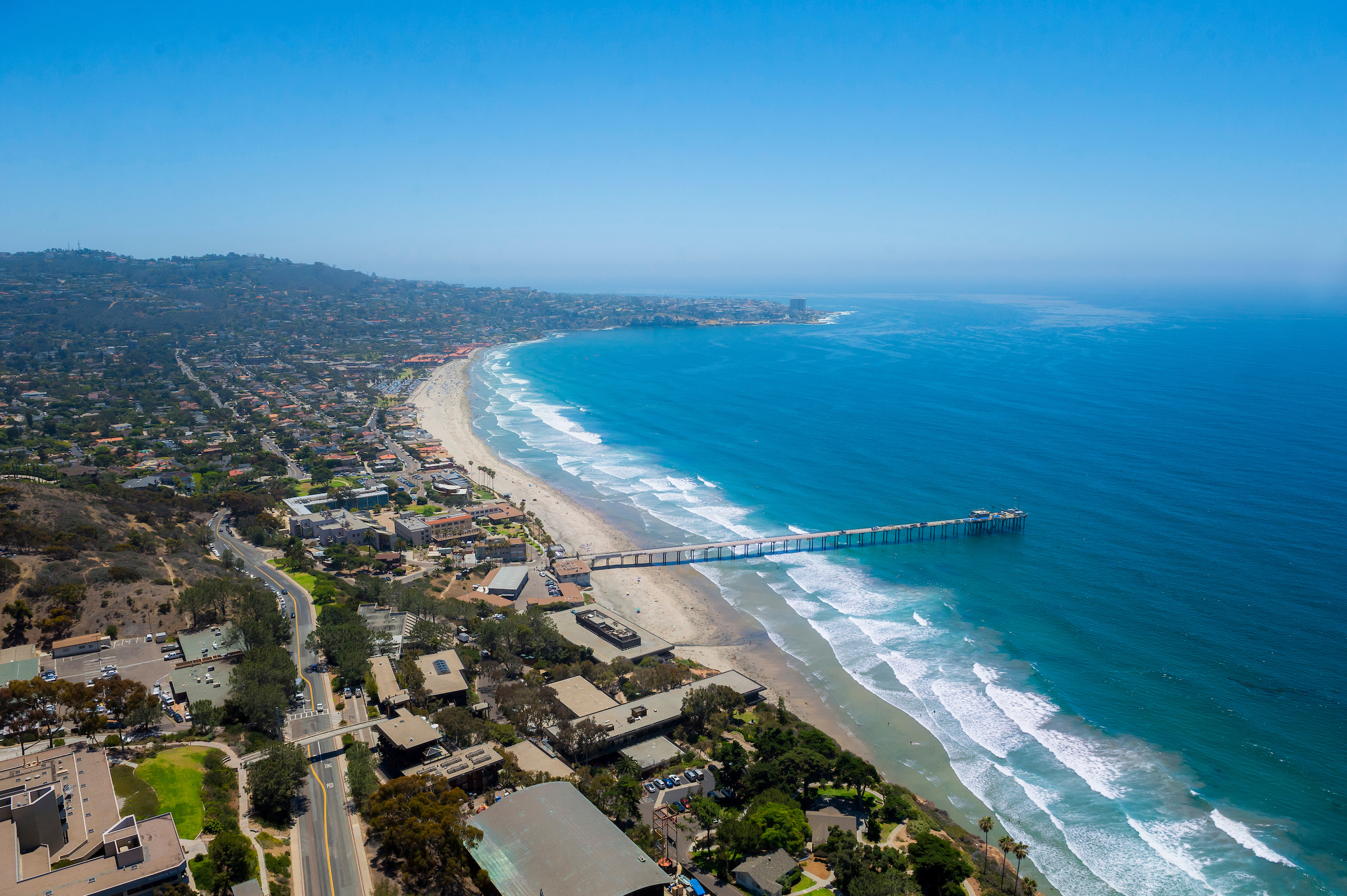San Diego has numerous beaches for locals and visitors to enjoy, each with its own amenities and regulations. The city of San Diego highly encourages all visitors to consider the safety guidelines outlined on their website: https://www.sandiego.gov/lifeguards/safety
Also, remember that in San Diego there is lots of marine life. You'll often encounter various animals at the beach, including sting rays, sharks, fish, seals, sea lions, jellyfish, and more. Keep a safe distance when encountering marine life. When entering the water, do the Sting Ray Shuffle to make sure you don't get stung by a sting ray!
Other Important water safety terms and concepts include:
- Rip current or Rip tide: a very strong, localized current that flows away from the shoreline toward the ocean, perpendicular or at an acute angle to the shoreline. If caught in a rip current, swim sideways until free. Do NOT swim against the current's pull.
- High Surf Advisory or Conditions: often the result of strong coastal storm systems, this means there will be high winds and and big, strong waves near coastal areas.
California is vulnerable to earthquakes. Click on the following link for information on how to get real time earthquake alerts: https://earthquake.ca.gov/get-alerts/
Most people can survive an earthquake and minimize its damage simply by becoming aware of potential hazards and taking some basic earthquake preparedness measures. Prepare an earthquake kit with food and water, flashlight, radio, extra batteries, and a first aid kit.
Since earthquakes strike without warning, it’s important to practice earthquake safety now. The longer one waits, the greater the risk. Experts know that damaging earthquakes are coming but they don’t know when. Knowing that you know what to do (and what not to do) before, during, and after a quake, however strong, will assist in keeping you safe.
Here are a few points to remember during an earthquake:
- If there is an earthquake, get under something, such as a desk or table. Your back should be to the window.
- Protect your face, and try to make your body as small as possible.
- If you are outside, try to move to an open area away from trees, power lines, or objects, which could fall.
- If you are in an automobile, stop in an open area if possible.
- If you are home, check utility lines and appliances for damage that could cause a fire. Do not touch electrical wires.
- Turn on your radio for information.
- Be prepared for aftershocks. Although most of these are smaller than the main shock, some may be large enough to cause additional damage or injuries.
For more information about earthquake preparedness, visit: http://blink.ucsd.edu/safety/resources/training/earthquake.html.
These are weather phenomena referring to weather patterns. During El Niño, California tends to experience periods of increased rainfall that can have the potential to cause flooding, landslides, and erosion. La Niña has the opposite effect, and typically Southern California experiences long periods of drier, drought conditions which can lead to increased fire danger.
San Diego's geographic location means that it often experiences warm and dry conditions. You'll often hear on the weather report of a "Heat Advisory in Effect." This means that the region will experience warmer than average temperatures. Remember to stay hydrated and avoid the outdoors when it's predicted to be the warmest. A good way to stay up-to-date is to download weather alerts on your smart-phone.
This is an uncommon weather pattern originating from the Southern Pacific Ocean that brings lots of moisture to California. Areas affected by a "Pineapple Express" weather event will typically see much higher than average rainfall in just a few days.
Often paired with heat advisories are the Santa Ana Winds. Also known as "The Santa Anas" or "Santa Ana Conditions", this is a weather phenomenon where winds originating from hot, inland areas blow toward the coast. Santa Ana conditions occur at various times throughout the year. When paired with a heat advisory, these winds can have an increased potential to start wildfires.
Peak fire season tends to be in the summer months, however wildfires can occur at any time of year in any part of California. If you see a wildfire, dial 911 to alert the local authorities. California's primary fire-response team is Cal-Fire. All information about active wildfires can be found on their website: https://www.fire.ca.gov/
